#modern-day turkey
Text

Street scene in Constantinople, modern-day Istanbul, Turkey
Turkish vintage postcard
#old#postcard#postkaart#istanbul#street#day#vintage#briefkaart#postal#constantinople#ansichtskarte#ephemera#turkey#photography#photo#modern#postkarte#tarjeta#turkish#historic#sepia#scene#carte postale
6 notes
·
View notes
Text
recent comic bullshit has actually got me considering purposely losing the "i cant be a weeb if im just as weird about american comics" card because hot damn my decision to only read at least decade and a half old comics over and over again has once again been justified
#coming to terms with the fact my tumblr hiatus may be less about social anxiety and more about quiting modern comics cold turkey#It can't hurt me if I already know all the ways it's bad#I almost miss my marvel comics fandom days#Oh haha the editors are chikening out of resolving the love triangle so hard it's gay <- not aware of the horrors of dc editorial yet#I need to read black widow again#And matt fraction hawkeye#And ofc cap america 2004#Because I am at heart a basic bitch#Tbh some of the newer black widow stuff was decent#Two years ago before I got dragged into the black hole that is dc
5 notes
·
View notes
Text
@beatingheart-bride
"I don't think it's silly at all."
It was completely understandable to him, for her to be a touch nervous-even with how confident he felt in their ability to get away with it, there was no denying that it was an incredibly brazen plan. How many people would be so bold as to spend the evening in the company of their secret lovers, right under the nose of so many people, people who would absolutely lose their minds if they knew the truth...
"They do say that sometimes, the best place to hide is in plain sight," Dorian continued, rubbing his chin as he gave it some thought. "And I think that turn of phrase will prove to be very true tonight: As I said, I believe that everyone will mostly be so busy schmoozing and making nice that their eyes will hardly be on us. I'm sure we'll have to come over and shake hands with Mr. and Mrs. So-and-so who will be at the wedding tomorrow, accept the congrats of Mr. and Mrs. What's-the-name, kiss up to the Something-or-others, but I think we can manage that."
As he listened off these imaginary guests, Dorian flashed her a little smile, in the hopes that his playful names would make her laugh, help her relax a little-humor was oftentimes his way of alleviating stress, taking the edge off, and he hoped it would be the same for Emily as he finished confidently, "We'll go around, roll out the proverbial welcome wagon, perhaps answer a few questions here and there, but overall, I'm sure we'll be able to slip away and spend the evening with those we'd most enjoy it with."
#((i love that idea! without thinking she namedrops something MUCH older than her))#((something that might be more from june and wilhelm's generation; and they express pleasant surprise))#((not expecting someone of her age to be familiar with that-maybe emily's able to wave it off a little))#((as being an 'old soul'; interested in older media as a means of covering for herself?))#((i think she'd defidently have picked up on a lot of pop culture and slang over the years))#((and so i could see those older piece of media/turns of phrase bleeding into her vernacular!))#((honestly; i get it: i'm not up on my modern pop culture and slang!))#((who's the hottest movie star right now? beats me. who's got the hottest album right now? how should i know?))#((i admit that i don't listen to the local yokel radio station as much as i did; i got sirius xm now))#((so i find myself listening to the older music channels; and i watch a lot of older movies))#((more than i do what's in theaters with some exceptions; so that's probably why i'm so lost!))#((also: happy turkey day!))#outofhatboxes#beatingheart-bride#V:Days of Future Past
5 notes
·
View notes
Text
Silly HC: Theseus' thick eyebrows, chin cleft, and squarish jaw come from his mom's side of the family, while his hooked nose, blue eyes, and blonde hair come from his dad's side.
In ancient cultures, blonde hair and blue eyes were considered "barbarian" traits, so it probably helped his family spread around the idea that Theseus is a son of Poseidon 😭
#[ sing clear voiced muse ]#👑 | champion of my heart#A 'barbarian' in a ancient Greece was any non-greek speaking peoples#And Theseus has ancestry in Lydia (modern day turkey)#I know that when he first came to Athens many were wary of him due to him being a foreigner#So I wonder if him having Turkish (and Ethiopian on my HC) ancestry was part of it too#I also HC that Aegeus (Theseus' father) himself was a ' foreigner '#He was an adopted son of his father Pandion who originally came from Egypt#Based in some reading I did where I learned many ancient kings of Athens were of Egyptian origins
13 notes
·
View notes
Text

#The 'Green Man' mosaic#a Byzantine mosaic from the Great Palace Mosaic Museum featuring a man with acanthus leaf foliage for a beard#modern-day Istanbul#Turkey#c. 6th century AD. [535x674]
4 notes
·
View notes
Text

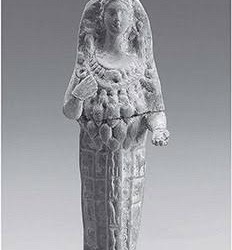
Polybius on Superstition
Among the people of Bargylia it is a common report widely believed that the statue of the Kindyan Artemis, though in the open air, is never touched by snow or rain; and the same belief is held among the Iassians as to the Artemis Astias. All these stories have been repeated by certain historians. But, for my part, I have in the whole course of my work set myself against such statements of our historiographers and have had no toleration for them. For it appears to me that such tales are only fit to amuse children, when they transgress not only the limits of probability but even those of possibility. For instance, to say that certain bodies when placed in full light cast no shadow argues a state of quite deplorable folly. But Theopompus has done this; for he says that those who enter the holy precinct of Zeus in Arcadia cast no shadow, which is on a par with the statements to which I have just referred. Now, in so far as such tales tend to preserve the reverence of the vulgar for religion, a certain allowance may be made for some historians when they record these miraculous legends. But they must not be allowed to go too far. Perhaps it is difficult to assign a limit in such a matter; still it is not impossible. Therefore, in my judgment, such displays of ignorance and delusion should be pardoned if they do not go very far, but anything like extravagance in them should be rejected.
#quote#polybius#roman historian#book xvii polybius’ histories#bargylia#boğaziçi#modern day turkey#superstition#rome#romans#spqr
2 notes
·
View notes
Text
Starting Shahmaran tonight! It's a Turkish series about the Turkish/Kurdish/Persian legend of the same name
#she's the QUueen of Snakes and actually a very positive figure in her legends#and in modern day is used as an LGBT symbol in Turkey#and the strength and resilience of Kurdish women#so I am excited to see what they do with her story in this
1 note
·
View note
Text
Anyone else find themselves forgetting that it's not called Constantinople anymore? But is in fact Istanbul?
#I blame blue for being the reason I think about the byzantine empire far more often then modern turkey or even the ottoman empire#osp#honestly i think that song is the only reason i remember it's current name most days
1 note
·
View note
Text








Give Thanks With A Grateful Heart: Ein Ausdruck der Dankbarkeit und des Herzensdankes.
#redbubble#findyourthing#design#kreativität#festlich#herbst#dekoration#modern#give thanks with a grateful heart#blessed#give thanks#grateful heart#happy thanksgiving day#thankful#thanksgiving#thanksgiving 2023#thanksgiving day#thanksgiving dinner#thanksgiving quarantine#thanksgiving turkey#turkey
0 notes
Text
It is over and everything is lost. This is the refrain repeated by Armenian families as they take that final step across the border out of their home of Nagorno-Karabakh.
In just a handful of days more than 100,000 people, almost the entire Armenian population of the breakaway enclave, has fled fearing ethnic persecution at the hands of Azerbaijani forces. The world barely registered it. But this astonishing exodus has vanished a self-declared state that thousands have died fighting for and ended a decades-old bloody chapter of history.
On Saturday, along that dusty mountain road to neighbouring Armenia, a few remaining people limp to safety after enduring days in transit.
Among them is the Tsovinar family who appear bundled in a hatchback littered with bullet holes, with seven relatives crushed in the back. Hasratyan, 48, the mother, crumbles into tears as she tries to make sense of her last 48 hours. The thought she cannot banish is that from this moment forward, she will never again be able to visit the grave of her brother killed in a previous bout of fighting.
“He is buried in our village which is now controlled by Azerbaijan. We can never go back,” the mother-of-three says, as her teenage girls sob quietly beside her.
“We have lost our home, and our homeland. It is an erasing of a people. The world kept silent and handed us over”.
She is interrupted by several ambulances racing in the opposite direction towards Nagorno-Karabakh’s main city of Stepanakert, or Khankendi, as it is known by the Azerbaijani forces that now control the streets. Their job is to fetch the few remaining Karabakh Armenians who want to leave and have yet to make it out.
“Those left are the poorest who have no cars, the disabled and elderly who can’t move easily,” a first responder calls at us through the window. “Then we’re told that’s it.”
As the world focused on the United Nations General Assembly, the war in Ukraine and, in the UK, the felling of an iconic Sycamore tree, a decades old war has reignited here unnoticed.
It ultimately heralded the end of Nagorno-Karabakh, a breakaway Armenian region, that is internationally recognised as being part of Azerbaijan but for several decades has enjoyed de facto independence. It has triggered the largest movement of people in the South Caucasus since the collapse of the Soviet Union.
Azerbaijan has vehemently denied instigating ethnic cleansing and has promised to protect Armenians as it works to reintegrate the enclave.
But in the border town of Goris, surrounded by the chaotic arrival of hundreds of refugees, Armenia’s infrastructure minister says Yerevan was now struggling to work out what to do with tens of thousands of displaced and desperate people.
“Simply put this is a modern ethnic cleansing that has been permitted through the guilty silence of the world,” minister Gnel Sanosyan tells The Independent, as four new busses of fleeing families arrive behind him.
“This is a global shame, a shame for the world. We need the international community to step up and step up now.”
The divisions in this part of the world have their roots in centuries-old conflict but the latest iterations of bitter bloodshed erupted during the collapse of the Soviet Union. The Karabakh Armenians, who are in the majority in the enclave, demanded the right to autonomy over the 4,400 square kilometre rolling mountainous region that has its own history and dialect. In the early 1990s they won a bloody war that uprooted Azerbaijanis, building a de facto state that wasn’t internationally unrecognised.
That is until in 2020. Azerbaijan, backed by Turkey, launched a military offensive and took back swathes of territory in a six-week conflict that killed thousands of soldiers and civilians. Russia, which originally supported Armenia but in recent years has grown into a colder ally, brokered a fragile truce and deployed peacekeepers.
But Moscow failed to stop Baku in December, enforcing a 10-month blockade on Nagorno-Karabakh, strangling food, fuel, electricity and water supplies. Then, the international community stood by as Azerbaijan launched a 24-hour military blitz that proved too much for Armenian separatist forces. Outgunned, outnumbered and weakened by the blockade, they agreed to lay down their weapons.
For 30 years the Karabakh authorities had survived pressure from international powerhouses to give up statehood or at least downgrade their aspirations for Nagorno-Karabakh. For 30 years peace plans brokered by countries across the world were tabled and shelved.
And then in a week all hope vanished and the self-declared government agreed to dissolve.
Fearing further shelling and then violent reprisals, as news broke several Karabakh officials including former ministers and separatist commanders, had been arrested by Azerbaijani security forces, people flooded over the border.
At the political level there are discussions about “reintegration” and “peace” but with so few left in Nagorno-Karabakh any process would now be futile.
And so now, sleeping in tents on the floors of hotels, restaurants and sometimes the streets of border towns, shellshocked families, with a handful of belongings, are trying to piece their lives together.
Among them is Vardan Tadevosyan, Nagorno-Karabakh’s minister of health until the government was effectively dissolved on Thursday. He spent the night camping on the floor of a hotel, and carries only the clothes he is wearing. Exhausted he says he had “no idea what the future brings”.
“For 25 years I have built a rehabilitation centre for people with physical disabilities I had to leave it all behind. You don’t know how many people are calling me for support,” he says as his phone ringed incessantly in the background throughout the interview.
“We all left everything behind. I am very depressed,” he repeats, swallowing the sentence with a sigh.
Next to him Artemis, 58, a kindergarten coordinator who has spent 30 years in Steparankert, says the real problems were going to start in the coming weeks when the refugees outstay their temporary accommodation.
“The Azerbaijanis said they want to integrate Nagorno-Karabakh but how do you blockade a people for 10 months and then launch a military operation and then ask them to integrate?” she asks, as she prepares for a new leg of the journey to the Armenian capital where she hopes to find shelter.
“The blockade was part of the ethnic cleansing. This is the only way to get people to flee the land they love. There is no humanity left in the world.”
Back in the central square of Goris, where families pick through piles of donated clothes and blankets and aid organisations hand out food, the loudest question is: what next?
Armenian officials are busy registering families and sending them to shelters in different corners of the country. But there are unanswered queries about long-term accommodation, work and schooling.
“I can’t really think about it, it hurts too much,” says Hasratyan’s eldest daughter Lilet, 16, trembling in the sunlight as the family starts the registration process.
“All I can say to the world is please speak about this and think about us. We are humans, people made of blood, like you and we need your help.”
8K notes
·
View notes
Photo
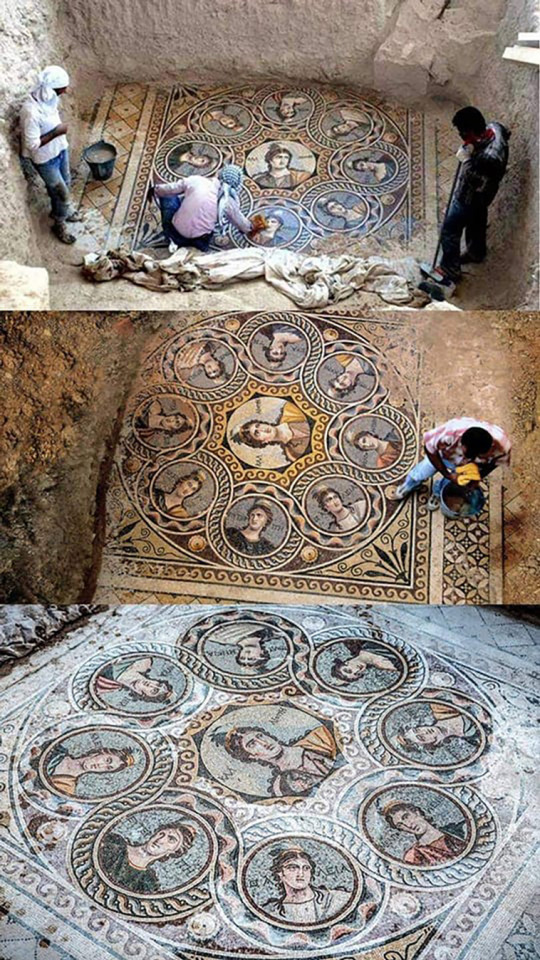
The nine muses of Ancient Greece discovered in the ancient Greek city of Zeugma, now in modern-day Turkey. The mosaics have been almost perfectly preserved for over 2,000 years
4K notes
·
View notes
Text

Bazars of Smyrna, modern-day İzmir, Turkey
Turkish vintage postcard
#vintage#tarjeta#bazars#briefkaart#turkey#postcard#photography#postal#carte postale#modern#sepia#ephemera#modern-day#historic#ansichtskarte#smyrna#postkarte#i̇zmir#turkish#postkaart#photo
3 notes
·
View notes
Text
Someone on Reddit made the mistake of saying, "Teach me how this conflict came about" where I could see it.
Let me teach you too.
The common perception is that Jews came out of nowhere, stole Palestinian homes and kicked Palestinians out of them, and then bombed them for 75 years, until they finally rebelled in the form of Hamas invading Israel and massacring 22 towns in one day.
The historical reality is that Jews have lived there continuously for at least 3500 years.
There are areas, like Meggido iirc, with archeological evidence of continuous habitation for 7,000 years, but Jewish culture as we recognize it today didn't develop until probably halfway through that.
Ethnic Jews are the indigenous people of this area.
Indigeneity means a group was originally there, before any colonization happened, and that it has retained a cultural connection to the land. History plus culture.
That's what Jews have: even when the diaspora became larger than the number of Jews in Israel, the yearning to return to that homeland was a daily part of Jewish prayer and ritual.
The Jewish community in Israel was crushed pretty violently by the Roman Empire in 135 CE, but it was still substantial, sometimes even the majority population there, for almost a thousand years.
The 600s CE brought the advent of Islam and the Arab Empire, expanding out from Saudi Arabia into Israel and beyond. It was largely a region where Jews were second-class citizens. But it was still WAY better than the way Christian Europe treated Jews.
From the 700s-900s, the area saw repeated civil wars, plagues, and earthquakes.
Then the Crusades came, with waves of Christians making "pilgrimages to the Holy Land" and trying to conquer it from Muslims and Jews, who they slaughtered and enslaved.
Israel became pretty well depopulated after all that. It was a very rough time to live there. (And for the curious, I'm calling it Israel because that's what it had been for centuries, until the Romans erased the name and the country.)
By the 1800s, the TOTAL population of what's now Israel and Palestine had varied from 150,000 - 275,000 for centuries. It was very rural, very sparsely populated, on top of being mostly desert.
In the 1880s, Jews started buying land and moving back to their indigenous homeland. As tends to happen, immigration brought new projects and opportunities, which led to more immigration - not only from Jews, but from the Arab world as well.
Unfortunately, there was an antisemitic minority spearheaded by Amin al-Husseini. Who was very well-connected, rich, and from a politically powerful family.
Al-Husseini had enthusiastically participated in the Armenian Genocide under the Ottoman Empire. Then the Empire fell in World War One, and the League of Nations had to figure out what to do with its land.
Mostly, if an area was essentially operating as a country (e.g. Turkey), the League of Nations let it be one. In areas that weren't ready for self-rule, it appointed France or Britain to help them get there.
In recognition of the increased Jewish population in their traditional, indigenous homeland, it declared that that homeland would again become Israel.
As in, the region was casually called Palestine because that was the lay term for "the Holy Land." It had not been a country since Israel was stamped out; only a region of a series of different empires. And the Mandate For Palestine said it was establishing "a national home of the Jewish people" there, in recognition of "the historical connection of the Jewish people with Palestine and to the grounds for reconstituting their national home in that country."
Britain was appointed to help the Arab and Jewish communities there develop systems of self-government, and then to work together to govern the region overall.
At least, that was the plan.
Al-Husseini, who was deeply antisemitic, did not like this plan.
And, extra-unfortunately, the British response to al-Husseini inciting violent anti-Jewish riots was to put him in a leadership role over Arab Palestine.
They thought it would calm him down and perhaps satisfy him.
They were very wrong.
He went on to become a huge Hitler fanboy, and then a Nazi war criminal. He co-created the Muslim Brotherhood - which Hamas is part of - with fellow fascist fanboy Hassan al-Banna.
He got Nazi Party funding for armed Muslim Brotherhood militias to attack Jews and the Brits in the late 30s, convincing Britain to agree to limit Jewish immigration at the time when it was most desperately needed.
He started using the militias again in 1947, when the United Nations voted to divide the mandated land into a Jewish homeland and a Palestinian one.
Al-Husseini wouldn't stand for a two-state solution. He was determined to tolerate no more than the subdued, small Jewish minority of second-class citizens that he remembered from his childhood.
As armed militias increasingly ran riot, the Arab middle and upper classes increasingly left. About 100,000 left the country before May 1948, when Britain was to pull out, leaving Israel and Palestine to declare their independence.
The surrounding nations didn't want war. They largely accepted the two-state solution.
But al-Husseini lobbied HARD. And by mobilizing the Muslim Brotherhood to provide "destabilizing mass demonstrations and a murderous campaign of intimidation," he got the Arab League nations to agree to invade, en masse, as soon as Britain left.
About 600,000 Arabs fled to those countries during the ensuing war.
Jews couldn't seek refuge there; in fact, most of those countries either exiled their Jews directly, confiscating their property first, or else made Jewish life unlivable and exploited them for underpaid or slave labor for years first.
By the time the smoke cleared and a peace treaty was signed, most of the Arab Palestinian community had fled; there was no Arab Palestinian leadership; many of the refugees' homes and businesses had left had been destroyed in the war; and Israel had been flooded with nearly a million refugees from the Arab League countries and the Holocaust - even more people than had fled the war.
That was the Nakba. The one that gets portrayed as "750,000 Palestinians fled or were expelled!" in the hope that you'll assume they were expelled en masse, their beautiful intact homes all stolen.
Egypt had taken what's now the Gaza Strip in that war, and Jordan took what's now the West Bank - expelling or killing all the Jews in it first.
(Ironically, Jordan was originally supposed to be part of Israel. Britain, inexplicably, cut off what would have been 75% of its land to create Jordan.
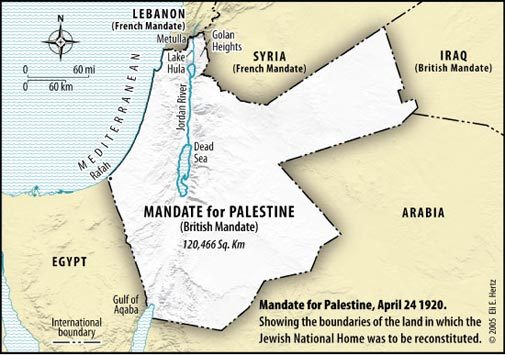
Even more inexplicably, nobody ever talks about it. I've never seen anyone complain that Jordan was stolen from Palestinians. Possibly because Jordan is also the only country that gave Palestinian refugees full citizenship, and it's about half Palestinian now.
Israel is nearly 25% Arab Palestinians with full citizenship and equal rights, so it's not all that different -- but the fundamental difference of living in a country where the majority is Jewish, not Muslim, probably runs pretty deep.)
Anyway: that's why Palestine is Gaza and the West Bank, rather than being some contiguous chunk of land. Or being the land set aside by the U.N. in 1947.
Because Arab countries took that land in 1948, and treated them as essentially separate for 20 years.
Israel got them back, along with the Golan Heights and the Sinai Peninsula, in the next war: 1967, when Egypt committed an act of war by taking control of the waterways and barring Israel from them. It gave the Sinai back to Egypt as part of the 1979 peace accords between Egypt and Israel.
Israel tried to give back the Gaza Strip at the same time. Egypt refused.
Palestine finally declared independence in 1988.
But Hamas formed at about the same time. Probably in response, in fact. Hamas is fundamentally opposed to peace negotiations with Israel.
Again: Hamas is part of a group founded by Nazis.
Hamas has its own charter. It explains that Jews are "the enemy," because they control the drug trade, have been behind every major war, control the media, control the United Nations, etc. Basic Nazi rhetoric.
It has gotten adept at masking that rhetoric for the West. But to friendlier audiences, its leaders have consistently said things like, "People of Jerusalem, we want you to cut off the heads of the Jews with knives. With your hand, cut their artery from here. A knife costs five shekels. Buy a knife, sharpen it, put it there, and just cut off [their heads]. It costs just five shekels."
(Palestinians were outraged by this speech. Palestinians, by and large, absolutely loathe Hamas.
It's just that it's not the same to say that to locals, as it is to say it where major global powers who oppose this crap can hear you.)
Hamas has stated from the beginning that its mission is to violently destroy Israel and take over the land.
It has received $100M in military funding annually, from Iran, for several years. Because Iran has been building a network of fascist, antisemitic groups across the Middle East, in a blatant attempt to control more and more of it: Hezbollah in Lebanon. The Houthis in Yemen.
Iran has been run by a very far-right, deeply antisemitic dictatorship for decades now, which pretty openly wants to take down both Israel and the U.S.
Last year, Iran increased Hamas's funding to $350M.
The "proof of concept" invasion of Israel that Hamas pulled off on October 7th more than justifies a much bigger investment.
Hamas has publicly stated its intention to attack "again and again and again," until Israel has been violently destroyed.
That is how this conflict came about.
A Nazi group seized power in Gaza in 2007 by violently kicking the Palestinian government out, and began running it as a dictatorship, using it to build money and power in preparations for exactly this.
And people find it shockingly easy to believe its own hype about being "the Palestinian resistance."
As well as its propaganda that Israel is not actually targeting Hamas: it's just using a literal Nazi invasion and massacre as an excuse to randomly commit genocide of the fraction of Palestine it physically left 20 years ago.
Despite the fact that Palestinians in Gaza have been protesting HAMAS throughout the war.
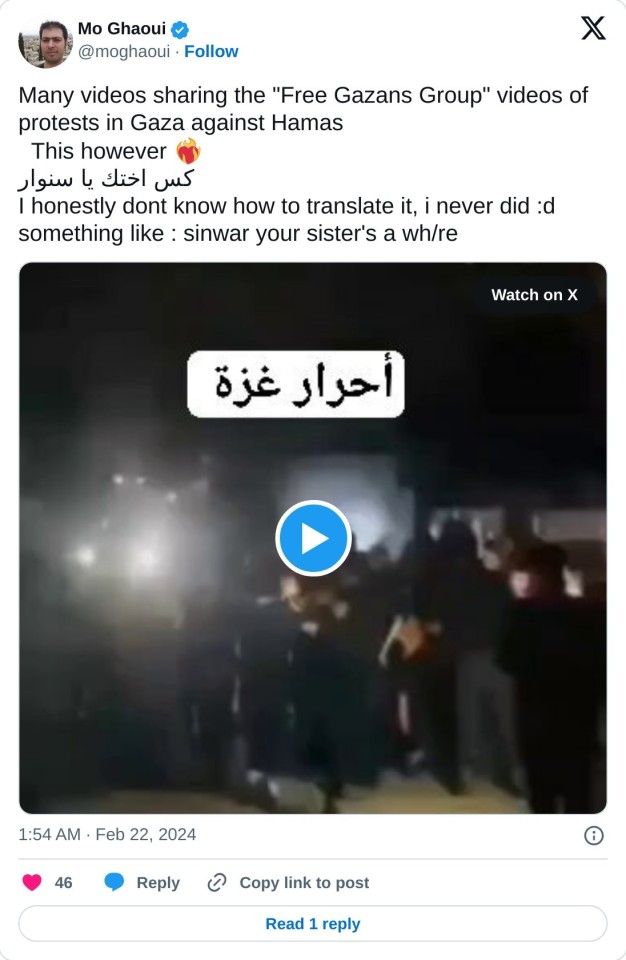
#free palestine#free gaza from hamas#free everyone from hamas it's awful#we want to live movement#free gazans group#center the people directly affected#Ironically it's almost exclusively zionists who know about and support the actual activists in Palestine#because Zionism is a real Jewish term for self-determination not something you can redefine to demonize us#and the pro-hamas movement is inherently both antisemitic and anti-Palestinian#wall of words#jumblr#jewish history#palestinian history
686 notes
·
View notes
Text



Travel back [...] a few hundred years to before the industrial revolution, and the wildlife of Britain and Ireland looks very different indeed.
Take orcas: while there are now less than ten left in Britain’s only permanent (and non-breeding) resident population, around 250 years ago the English [...] naturalist John Wallis gave this extraordinary account of a mass stranding of orcas on the north Northumberland coast [...]. If this record is reliable, then more orcas were stranded on this beach south of the Farne Islands on one day in 1734 than are probably ever present in British and Irish waters today. [...]
Other careful naturalists from this period observed orcas around the coasts of Cornwall, Norfolk and Suffolk. I have spent the last five years tracking down more than 10,000 records of wildlife recorded between 1529 and 1772 by naturalists, travellers, historians and antiquarians throughout Britain and Ireland, in order to reevaluate the prevalence and habits of more than 150 species [...].
In the early modern period, wolves, beavers and probably some lynxes still survived in regions of Scotland and Ireland. By this point, wolves in particular seem to have become re-imagined as monsters [...].
Elsewhere in Scotland, the now globally extinct great auk could still be found on islands in the Outer Hebrides. Looking a bit like a penguin but most closely related to the razorbill, the great auk’s vulnerability is highlighted by writer Martin Martin while mapping St Kilda in 1697 [...].
[A]nd pine martens and “Scottish” wildcats were also found in England and Wales. Fishers caught burbot and sturgeon in both rivers and at sea, [...] as well as now-scarce fishes such as the angelshark, halibut and common skate. Threatened molluscs like the freshwater pearl mussel and oyster were also far more widespread. [...]
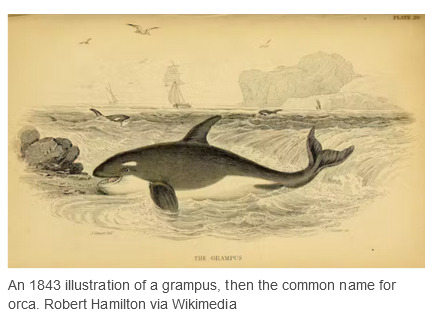
Predators such as wolves that interfered with human happiness were ruthlessly hunted. Authors such as Robert Sibbald, in his natural history of Scotland (1684), are aware and indeed pleased that several species of wolf have gone extinct:
There must be a divine kindness directed towards our homeland, because most of our animals have a use for human life. We also lack those wild and savage ones of other regions. Wolves were common once upon a time, and even bears are spoken of among the Scottish, but time extinguished the genera and they are extirpated from the island.
The wolf was of no use for food and medicine and did no service for humans, so its extinction could be celebrated as an achievement towards the creation of a more civilised world. Around 30 natural history sources written between the 16th and 18th centuries remark on the absence of the wolf from England, Wales and much of Scotland. [...]

In Pococke’s 1760 Tour of Scotland, he describes being told about a wild species of cat – which seems, incredibly, to be a lynx – still living in the old county of Kirkcudbrightshire in the south-west of Scotland. Much of Pococke’s description of this cat is tied up with its persecution, apparently including an extra cost that the fox-hunter charges for killing lynxes:
They have also a wild cat three times as big as the common cat. [...] It is said they will attack a man who would attempt to take their young one [...]. The country pays about £20 a year to a person who is obliged to come and destroy the foxes when they send to him. [...]
The capercaillie is another example of a species whose decline was correctly recognised by early modern writers. Today, this large turkey-like bird [...] is found only rarely in the north of Scotland, but 250–500 years ago it was recorded in the west of Ireland as well as a swathe of Scotland north of the central belt. [...] Charles Smith, the prolific Dublin-based author who had theorised about the decline of herring on the coast of County Down, also recorded the capercaillie in County Cork in the south of Ireland, but noted: This bird is not found in England and now rarely in Ireland, since our woods have been destroyed. [...] Despite being protected by law in Scotland from 1621 and in Ireland 90 years later, the capercaillie went extinct in both countries in the 18th century [...].
---
Images, captions, and text by: Lee Raye. “Wildlife wonders of Britain and Ireland before the industrial revolution – my research reveals all the biodiversity we’ve lost.” The Conversation. 17 July 2023. [Map by Lee Raye. Bold emphasis and some paragraph breaks/contractions added by me.]
1K notes
·
View notes
Text
Theseus has blonde hair and blue eyes yes. But it's because he's a biracial king 💖
#[ sing clear voiced muse ]#If you look at his mythological info you'd find that his maternal family originated in modern day Turkey#While on the other hand it's possible his father was of Egyptian blood //(read something about this in a Roman source but forgot which)
0 notes
Text
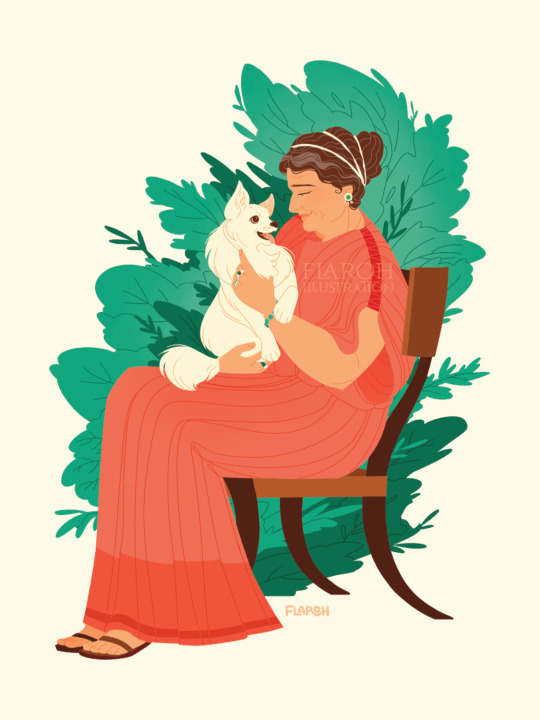
"This is the tomb of the dog, Stephanos, who perished. Whom Rhodope shed tears for and buried like a human.
I am the dog Stephanos, and Rhodope set up a tomb for me"
This piece is a tribute to two members of the ancient world, who lived in the Greek city of Termessos in modern day Turkey. We know about them today as Stephanos, a dog, had a tomb dedicated to him by his owner, Rhodope, who was also laid to rest nearby. As far as I can research, we don't know the exact details of when they lived, or much about their lives, except that Rhodope wanted us to know how much Stephanos meant to her.
His tomb was found near Rhodope’s own inscribed sarcophagus, which states that she set up the tomb completely and exclusively for herself. This suggests she was a single, independent wealthy woman.
Stephanos' remains are lost to time, but based on the size, and his role as a lady's companion dog, it is likely he was a melitan breed. This breed was a small, spitz-type dog that was incredibly popular in antiquity.
#tagamemnon#rhodope and stephanos#ancient greece#classical studies#greek archaeology#ancient turkey#flaroh illustration
2K notes
·
View notes